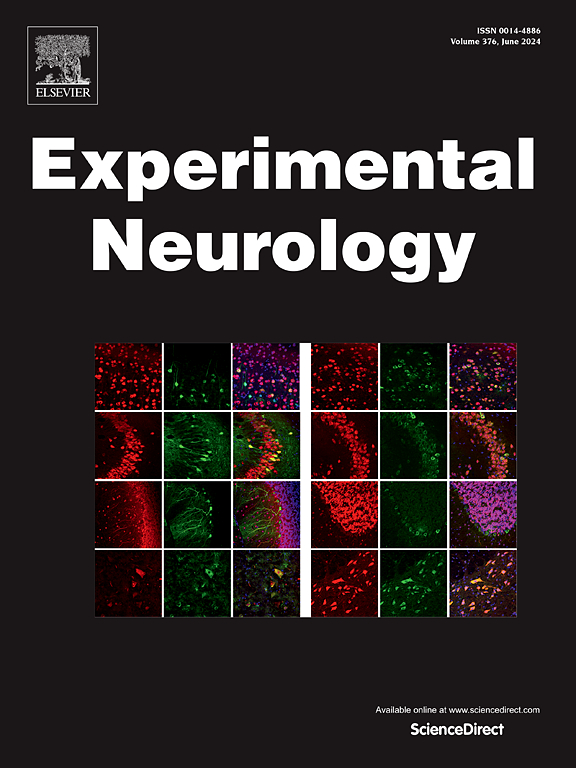Traumatic brain injury-induced anxiety: Injury and plasticity of the central noradrenergic system
IF 4.6
2区 医学
Q1 NEUROSCIENCES
引用次数: 0
Abstract
Long-term anxiety is a hallmark symptom following traumatic brain injury (TBI). Although the central noradrenergic system (CNAS) is known to play a critical role in anxiety by regulating the excitability of several intricately interconnected brain structures via its projections to them, critical questions remain regarding the nature and extent of TBI-induced neuroplastic alterations in the CNAS and how these alterations relate to anxiety disorders. Knowledge relative to these questions is pivotal to development and refinement of therapies for TBI-associated anxiety disorders, including post-traumatic stress disorder. To this end, this study was designed to determine the impacts of chronic TBI on neuroplasticity of the CNAS and their significance in anxiety disorders in a clinically relevant rodent model. A standardized weight-drop model was used to produce controlled impacts of mild-to-moderate TBI in rats. Following the elevated plus maze tests to longitudinally assess anxiety-like behavior at 2 and 18 weeks post-injury of TBI animals, brain tissues of naïve and TBI rats were coronally sectioned and immunostained for a noradrenergic (NA) marker (dopamine β-hydroxylase) and neuronal nuclei in the central NA production sites and critical anxiety-regulating brain structures. We discovered that TBI caused robust losses of NA cells in the locus coeruleus and NA innervation of the central nucleus of the amygdala, an emotional processing center. Conversely, TBI caused intense gains of NA cells in the A2/A1 cell groups and NA innervation of other major anxiety-regulating regions. These changes coincided with progressively elevated anxiety-like behavior. Possibly, NA properties of A2/A1 cells were upregulated to compensate for the TBI-induced severe cell losses in the locus coeruleus. We conclude that these bi-directional vast alterations in the CNAS following chronic TBI contribute to dysregulated anxiety and, in part, the pathophysiology of human post-traumatic stress disorder.

求助全文
约1分钟内获得全文
求助全文
来源期刊

Experimental Neurology
医学-神经科学
CiteScore
10.10
自引率
3.80%
发文量
258
审稿时长
42 days
期刊介绍:
Experimental Neurology, a Journal of Neuroscience Research, publishes original research in neuroscience with a particular emphasis on novel findings in neural development, regeneration, plasticity and transplantation. The journal has focused on research concerning basic mechanisms underlying neurological disorders.
 求助内容:
求助内容: 应助结果提醒方式:
应助结果提醒方式:


